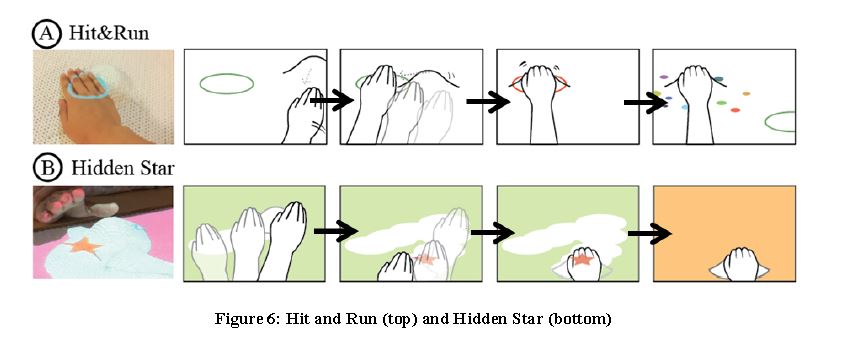Shape-changing robot for stroke rehabilitation
ACM DIS 2014
Narae Lee, Young Ho Lee, Jeeyong Chung, Heejeong Heo, Hyeonkyeong Yang, Kyung Soo Lee, Hokyoung Ryu, Sungho Jang & Woohun Lee

|
Abstract: Computing technologies are increasingly designed to support motor-impaired people with physical rehabilitation. Although it is important to reflect patients’ motivation to maintain effectiveness in therapy, these studies mostly show that these technologies can increase rehabilitation effectiveness by providing patients with certain stimulations repetitively. Patients can lose interest because of passive motion from limited stimulation. To understand the effects of multisensory manipulation and to reflect patients’ motivation during therapy, we introduce the novel Shape-changing Robot (SR) that can alter its surface in response to users’ movements, including visuo-tactile stimulus. The proposed SR was evaluated through an experiment with five post-stroke patients. This study shows that the SR’s physical movement can entice patients into a physical and emotional engagement by capturing their attention through physical motion, rather than through virtual motion. Furthermore, the SR can induce communicative gestures. This gesture pattern might help stroke patients become motivated to practice movement in therapy.
|
| This study was another type of multisensory integration experiement. I am applying this conception for a medical treatment. |
Link to read more, http://bit.ly/29Q7dQz
|
|